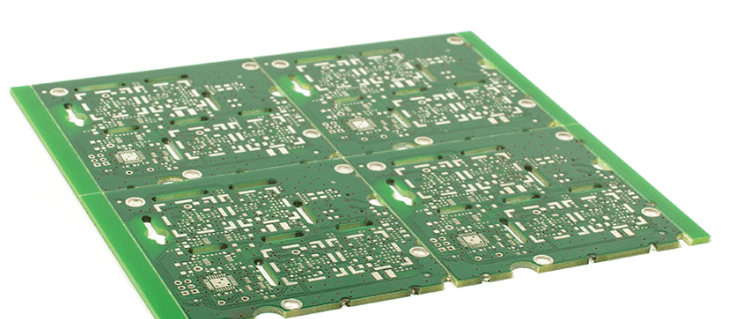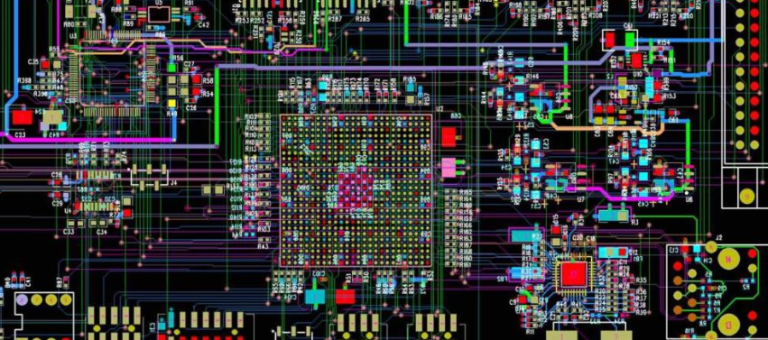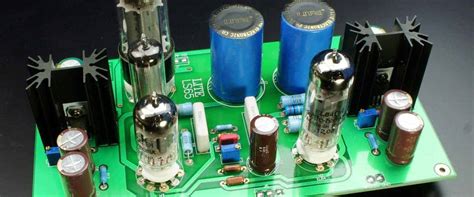Pcb v scoring machine
Understanding The Basics Of PCB V Scoring Machines
Printed Circuit Boards (PCBs) are integral components in modern electronic devices, serving as the foundation upon which electronic circuits are built. The manufacturing process of PCBs involves several intricate steps, one of which is the separation of individual boards from a larger panel. This is where PCB V scoring machines come into play. Understanding the basics of these machines is essential for anyone involved in PCB manufacturing or design.
PCB V scoring machines are specialized tools used to create V-shaped grooves on a PCB panel.
These grooves, or scores, allow for easy separation of individual PCBs from the panel without causing damage to the boards. The V scoring process involves cutting a V-shaped notch along the lines where the PCBs will be separated. This notch weakens the material along the score line, making it easier to snap the boards apart cleanly and precisely.
The operation of a PCB V scoring machine is both precise and efficient. Typically, the machine consists of a set of rotating blades that cut the V-shaped grooves into the PCB material. The depth and angle of the cut are critical parameters that must be controlled accurately to ensure the integrity of the boards. Too deep a cut can compromise the structural integrity of the PCB, while too shallow a cut may make it difficult to separate the boards without causing damage.
One of the primary advantages of using a PCB V scoring machine is the ability to produce clean and precise separations.
This is particularly important in high-volume manufacturing environments where consistency and quality are paramount. The V scoring process minimizes the risk of damaging the delicate electronic components on the PCB, which can occur with other separation methods such as manual breaking or using a saw.
Moreover, PCB V scoring machines offer significant time and cost savings.
The automated nature of these machines allows for rapid processing of large panels, reducing the time required for manual separation. Additionally, the precision of the V scoring process reduces the likelihood of defects, which can lead to costly rework or scrapping of damaged boards. This efficiency translates into lower production costs and higher throughput, making V scoring an attractive option for manufacturers.
Another important aspect to consider is the versatility of PCB V scoring machines.
These machines can handle a wide range of PCB materials and thicknesses, making them suitable for various applications. Whether working with rigid, flexible, or rigid-flex PCBs, V scoring machines can be adjusted to accommodate different material properties and design requirements. This flexibility is crucial in an industry where innovation and customization are key drivers of success.
In addition to their technical capabilities, PCB V scoring machines also contribute to improved workplace safety.
Manual separation methods can pose risks to operators, including repetitive strain injuries and exposure to sharp edges. By automating the scoring process, these machines reduce the need for manual handling, thereby enhancing operator safety and reducing the likelihood of workplace accidents.
In conclusion, PCB V scoring machines play a vital role in the efficient and precise manufacturing of printed circuit boards. Their ability to produce clean separations, coupled with time and cost savings, makes them an indispensable tool in the electronics industry. Understanding the basics of these machines, including their operation, advantages, and versatility, provides valuable insights into their importance in modern PCB manufacturing processes. As technology continues to advance, the role of PCB V scoring machines will undoubtedly remain crucial in meeting the demands of an ever-evolving industry.

Top Features To Look For In A PCB V Scoring Machine
When selecting a PCB V scoring machine, it is essential to consider several key features that can significantly impact the efficiency, precision, and overall quality of your printed circuit board (PCB) production process. One of the foremost features to look for is the machine’s scoring accuracy. High precision in V scoring is crucial as it ensures that the PCBs can be easily separated without causing damage to the board or its components. Machines equipped with advanced laser or optical alignment systems can offer superior accuracy, thereby enhancing the reliability of the scoring process.
Another critical feature is the machine’s versatility in handling various PCB materials and thicknesses.
A high-quality PCB V scoring machine should be capable of processing a wide range of materials, including FR4, aluminum, and flexible PCBs. Additionally, it should accommodate different board thicknesses to cater to diverse production requirements. This versatility not only broadens the scope of projects that can be undertaken but also ensures that the machine remains useful as production needs evolve.
The speed and efficiency of the machine are also paramount.
In a high-volume production environment, the ability to quickly and accurately score PCBs can significantly reduce lead times and increase throughput. Machines with automated feeding and scoring mechanisms can greatly enhance productivity by minimizing manual intervention and reducing the likelihood of errors. Furthermore, features such as programmable scoring patterns and adjustable scoring depths can provide additional flexibility and efficiency, allowing for rapid adjustments to meet specific project needs.
Durability and build quality are equally important considerations.
A robust PCB V scoring machine constructed from high-quality materials will not only ensure long-term reliability but also reduce maintenance costs and downtime. Machines with sturdy frames and precision-engineered components are less likely to suffer from wear and tear, thereby maintaining consistent performance over time. Additionally, features such as dust extraction systems can help prolong the life of the machine by preventing debris from accumulating and causing damage.
Ease of use and operator safety are also critical factors to consider.
A user-friendly interface with intuitive controls can significantly reduce the learning curve for operators, leading to more efficient and error-free operation. Safety features, such as emergency stop buttons and protective guards, are essential to prevent accidents and ensure a safe working environment. Moreover, machines that offer remote monitoring and diagnostics can provide valuable insights into performance and maintenance needs, further enhancing operational efficiency.
Another feature to look for is the machine’s compatibility with existing production workflows and systems.
Integration with computer-aided design (CAD) software and other manufacturing tools can streamline the production process and reduce the risk of errors. Machines that support industry-standard file formats and communication protocols can easily be incorporated into existing workflows, ensuring seamless operation and data exchange.
Lastly, consider the level of technical support and after-sales service provided by the manufacturer. A reliable support network can be invaluable in addressing any issues that may arise and ensuring that the machine continues to operate at peak performance. Manufacturers that offer comprehensive training, maintenance services, and readily available spare parts can provide peace of mind and help maximize the return on investment.
In conclusion, when selecting a PCB V scoring machine, it is essential to consider features such as scoring accuracy, versatility, speed, durability, ease of use, compatibility, and support. By carefully evaluating these factors, you can ensure that you choose a machine that meets your production needs and delivers high-quality results consistently.

How To Maintain Your PCB V Scoring Machine For Longevity
Maintaining your PCB V scoring machine is essential for ensuring its longevity and optimal performance. Proper maintenance not only extends the life of the machine but also guarantees the precision and quality of the printed circuit boards (PCBs) it produces. To achieve this, it is crucial to follow a systematic approach that encompasses regular inspections, cleaning, lubrication, and timely replacement of worn-out parts.
Firstly, regular inspections are fundamental to identifying potential issues before they escalate into significant problems.
It is advisable to conduct a thorough examination of the machine at least once a month. During these inspections, pay close attention to the condition of the blades, as they are critical components in the scoring process. Look for signs of wear and tear, such as dullness or chipping, which can compromise the accuracy of the scores. If any defects are detected, it is imperative to replace the blades promptly to maintain the machine’s efficiency.
In addition to inspections, cleaning the PCB V scoring machine is a vital maintenance task.
Dust, debris, and residue from the scoring process can accumulate on the machine’s surfaces and components, leading to malfunctions and reduced performance. To prevent this, it is recommended to clean the machine after each use. Use a soft brush or compressed air to remove loose particles, and a lint-free cloth dampened with a mild cleaning solution to wipe down the surfaces. Be cautious not to use harsh chemicals or abrasive materials, as they can damage the machine.
Lubrication is another critical aspect of maintaining your PCB V scoring machine.
Proper lubrication reduces friction between moving parts, thereby minimizing wear and tear. It is essential to use the appropriate lubricant specified by the manufacturer and apply it to the designated areas, such as the guide rails and bearings. Over-lubrication should be avoided, as it can attract dust and debris, leading to further complications. Regular lubrication, ideally once a month, ensures smooth operation and prolongs the machine’s lifespan.
Furthermore, timely replacement of worn-out parts is crucial for the longevity of the PCB V scoring machine.
Components such as belts, gears, and bearings are subject to wear over time and can affect the machine’s performance if not replaced when necessary. It is advisable to keep a stock of essential spare parts and follow the manufacturer’s recommendations for replacement intervals. By doing so, you can avoid unexpected downtime and maintain the machine’s efficiency.
Moreover, it is important to ensure that the machine is operated within its specified parameters.
Overloading the machine or using it for tasks beyond its capacity can lead to premature wear and potential damage. Always adhere to the manufacturer’s guidelines regarding the maximum thickness and material type for scoring. Additionally, providing adequate training to operators on the correct usage and maintenance procedures can significantly contribute to the machine’s longevity.
In conclusion, maintaining your PCB V scoring machine for longevity requires a combination of regular inspections, thorough cleaning, proper lubrication, and timely replacement of worn-out parts. By following these practices diligently, you can ensure that your machine operates efficiently and produces high-quality PCBs consistently. Remember that preventive maintenance is always more cost-effective than dealing with unexpected breakdowns, and investing time and effort in maintaining your machine will pay off in the long run.

Comparing PCB V Scoring Machines: Which One Is Right For You?
When it comes to the manufacturing of printed circuit boards (PCBs), precision and efficiency are paramount. Among the various methods employed to achieve these goals, V scoring machines have emerged as a popular choice. However, selecting the right V scoring machine for your specific needs can be a complex decision, influenced by several factors. This article aims to provide a comprehensive comparison of PCB V scoring machines, helping you determine which one is right for you.
To begin with, it is essential to understand what V scoring entails.
V scoring is a process used to create a V-shaped groove along the surface of a PCB, allowing for easy separation of individual boards after assembly. This technique is particularly advantageous in high-volume production environments, where speed and accuracy are critical. V scoring machines are designed to perform this task with high precision, ensuring that the depth and angle of the grooves are consistent across all boards.
One of the primary considerations when choosing a V scoring machine is the type of PCBs you are working with.
Different machines are optimized for various board materials and thicknesses. For instance, some machines are better suited for rigid PCBs, while others excel with flexible or rigid-flex boards. Additionally, the thickness of the PCB can significantly impact the choice of machine. Machines designed for thicker boards may not perform as well with thinner ones, and vice versa. Therefore, it is crucial to match the machine’s capabilities with the specific requirements of your PCBs.
Another critical factor to consider is the machine’s precision and accuracy.
High-precision V scoring machines are equipped with advanced control systems and cutting-edge technology to ensure that the grooves are perfectly aligned and consistent. This level of precision is particularly important for complex PCB designs, where even minor deviations can lead to significant issues during assembly. On the other hand, if your PCBs have relatively simple designs, a machine with standard precision may suffice, potentially offering cost savings.
The speed and efficiency of the V scoring machine are also vital considerations.
In high-volume production environments, the ability to process a large number of PCBs quickly can significantly impact overall productivity. Some machines are designed for high-speed operation, capable of scoring multiple boards simultaneously. However, it is essential to balance speed with accuracy, as faster machines may sometimes compromise on precision. Therefore, evaluating the machine’s throughput in conjunction with its precision capabilities is crucial.
Furthermore, the ease of use and maintenance of the V scoring machine should not be overlooked.
Machines with user-friendly interfaces and straightforward maintenance procedures can reduce downtime and increase overall efficiency. Additionally, consider the availability of technical support and spare parts, as these can significantly impact the machine’s long-term reliability and performance.
Cost is another important factor in the decision-making process.
While high-end V scoring machines with advanced features may offer superior performance, they also come with a higher price tag. It is essential to weigh the benefits of these features against your budget constraints and production requirements. In some cases, a mid-range machine may provide the best balance of performance and cost-effectiveness.
In conclusion, selecting the right PCB V scoring machine involves a careful evaluation of various factors, including the type of PCBs, precision and accuracy requirements, speed and efficiency, ease of use and maintenance, and cost. By thoroughly assessing these aspects, you can make an informed decision that aligns with your specific needs and production goals. Ultimately, the right V scoring machine can enhance your manufacturing process, ensuring high-quality PCBs and improved overall productivity.






